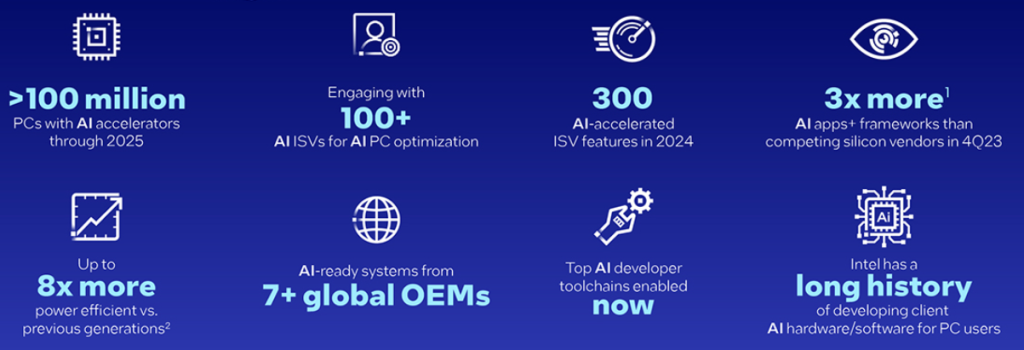Entering August, Intel Corporation (NASDAQ:INTC) has the lowest price-to-book (P/B) ratio in five years at 0.73. For comparison, Intel’s P/B was at 3.7 in January 2020. In other words, investors valued Intel at over 3x its book value (how much would it be worth if it were to be liquidated), indicating a positive outlook on the company’s future growth.
Intel’s P/B ratio has dropped so severely, with the market valuing the company at only 73% of its book value, indicating a 180-degree turn on investor sentiment. At the same time, Intel’s price-to-earnings (P/E) ratio is still highly elevated, currently at 85.48.
The divergence between Intel’s P/B and P/E points to a classic conundrum for investors: Is it a value trap? On one hand, with a 59% year-to-date decline, INTC stock may appear at a compelling discount.
On the other hand, Intel’s low P/B ratio could be justified based on deteriorating earnings and past mishaps, with investors expecting recovery that may fail to materialize. Does Intel’s most recent Q2 earnings report provide an answer, or is there more to the company’s prospects?
Intel’s Q2 Earnings Examined
On August 1st, Intel posted its Q2 2024 financial results, showing a year-over-year revenue decline of 1% to $12.8 billion. The chipmaking company generated a $1.6 billion net loss, opposite to its $1.5 billion net gain in the year-ago quarter of Q2 2023.
With earnings per share down 85% to negative $0.38 from positive $0.35 EPS in one year, Intel significantly missed the expected consensus estimate of positive $0.10 EPS. Intel CFO David Zinsner pointed the culprit to “gross margin headwinds from the accelerated ramp of our AI PC product.”
Intel’s gross margin, as the leftover revenue percentage after accounting costs, went down 0.4 ppt from 35.8% in Q2 2023. Considering that the semiconductor sector is both highly competitive and its average gross profit margin is 42.1%, this is bad news.
After all, in such a sector, for earnings to be justified, gross margin would at least have to show an upward trajectory. But, it is only bad news if Intel’s investment doesn’t materialize, which is why Zisner pointed to AI PC to make the case that the company is not a value trap.
What is Intel’s Long-Term Play?
In October 2023, Intel announced its AI PC acceleration program, forecasting AI over 100 million PCs by the end of 2025. Following Nvidia’s lead as it rapidly took a dominant stake in the data center market, the program is all about connecting vendors with Intel’s software and hardware stacks, primarily powered by Intel Core Ultra processors.

This is highly promising given the program’s inclusion of prominent software vendors such as Adobe (NASDAQ:ADBE), CyberLink, Audacity, Rewind AI, Zoom (NASDAQ:ZM), and others. Because AI PC covers such a wide range of uses, from gaming and security to content creation, Intel is hoping to replicate Nvidia’s success.
Furthermore, although Intel expects its competitive Gaudi 3 AI chips to only bring $500 million revenue throughout 2024, the delayed rollout of Nvidia’s Blackwell chips into Q1 2025 is likely to open more space for growth.
Long term, Intel counts on further miniaturization efforts. In 2025, Intel is scheduled to launch 18A node process architecture. At 1.8 nm transistor packing, it is purportedly 10% performance per watt improvement over the 20A (2 nm) process. For Intel’s expansion into the data center demand dominated by Nvidia (NASDAQ:NVDA), the PowerVia backside feature for improved power distribution is also to make a compelling case.
Of course, these rollouts are currently clouded by the multi-year embarrassment over the power stability of Intel’s 13th and 14th generation chips. At the end of July, Intel confirmed that elevated operating voltage resulted in the permanent degradation of these CPUs, but that no mass recall will be forthcoming as the mid-August microcode patch will have to suffice.
Nonetheless, Intel has the advantage in actively building its chip foundries against its fabless competitors Nvidia and AMD (NASDAQ:AMD). Both are reliant on TSMC capacity, while Intel plans to rank as the second world chip foundry by 2030, nestled between TSMC and Samsung (KS:005930).
Unfortunately, there are some major issues with that plan.
Final Verdict – Is Intel Stock a Buy?
When looking at Intel’s long-term valuation, it is difficult to extricate the company’s bottom line from geopolitics. As the world’s top chip foundry, TSMC expanded great efforts to alleviate China-US tensions over Taiwan by diversifying into other regions.
While Intel lacks Taiwan’s liability, it could be said that tying its foundry fortunes to Israel, an even more volatile region, is riskier. This is evidenced by the halted $25 billion expansion in June.
De facto, both Taiwan and Israel are under the US military protectorate, which may or may not be sufficient to assure investors. On the homefront in the US, this would prove a great opportunity for semiconductor companies to expand with effectively zero security risk.
***
Neither the author, Tim Fries, nor this website, The Tokenist, provide financial advice. Please consult our website policy prior to making financial decisions.
